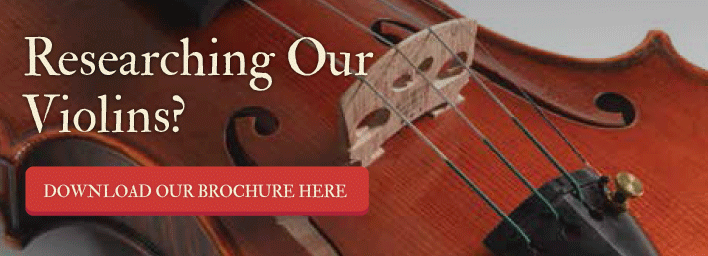How To Care For Your Violin in Cold Weather

As cold weather approaches, caring for your string instrument becomes of paramount importance. The plunging temperatures have an adverse effect on the violin family of instruments. Extreme conditions have the ability to loosen pegs, create unpleasant whistling sounds, and encourage cracks to develop. The reason for these detrimental changes is because in winter, the air is much drier. And although low temperatures encourage organic materials to contract, the main problem is the amount of moisture absorption that is possible.
However, you don’t have to be dismayed by the approach of the cold weather season. There are a number of actions you can take to prevent damage to your violin. Knowing how to care for your violin correctly can help keep it in top form, and help you avoid unnecessary problems and repairs.
Why Does Winter Wreak Havoc on Wood?
Because your violin is constructed of wood, it absorbs and releases moisture to maintain its balance with the humidity level around it. (The special scientific term is hygroscopic.) And although this happens at the microscopic level, it means that when you move your instrument from one location to another (or the environment changes), the resulting difference in humidity will cause the wood to expand or contact, depending on the temperature. Cold temperatures don’t allow much space between the molecules to hold water, so the heat level dictates how much moisture the air can hold, and thus, the amount of moisture in your violin.
This wouldn’t cause much of a problem, except for the fact that your violin is constructed from different types of wood. Basically, different species of trees have different absorption properties, and will swell or shrink at different rates. Moreover, the way the “grain” (essentially the cells in the wood) is running will also influence how much expansion or contraction will occur. While this is particularly significant in a violin, for larger instruments like the cello or double bass, the change in weather causes even larger effects.
Fortunately, your violin is designed to weather cold weather – somewhat. Since the joints of your instrument are connected with special “hide” glue, when the body and ribs begin to shrink in cold weather the glue is able to shatter, preventing serious damage to the parts of your violin. However, that means that cold weather has the ability to generate seam separations that cause annoying buzzes, as well as exasperate hairline cracks.
Other winter problems include:
- Soundpost shifts—the soundpost can move inside your violin when the center section of the top and bottom plates are effected by humidity levels. When this happens you’ll notice a decline in response, timbre, and projection.
- Loose pegs—because the maple used to make the peg box will shrink faster than the ebony used for pegs, these will often become very loose and need adjustments.
- Bridge height—when the top plate shrinks, the bridge can lower, resulting in the violin strings being closer to the fingerboard, which often produces a buzzing sound (especially in larger instruments).
Winter air has less moisture, and when it is pumped into your home and heated, although the temperature increases, the amount of moisture in the air does not. This makes the indoor atmosphere very dry. Since you can’t control the outdoor climate, you must do something about the inside areas. By following some fairly simple violin care tips, you’ll be able to prevent many of the problems and frustrations caused by cold weather.
Violin Care Tips—Storage and Transport
In the winter, it’s important to store and transport your instrument properly to prevent excessive evaporation; maintaining a consistent moisture level is the key. Try using the following ideas:
- Keep your violin in its hard case. In fact, it’s much easier to maintain the humidity in a small area (like your case) than a large room.
- Use an in-case humidifier/dehumidifier and digital hygrometer. Adding too much moisture to the area around your violin can be just as damaging as too little, so it’s a good idea to have an in-case hygrometer to measure the humidity level. You can purchase them at cigar shops or your string dealer. The ideal humidity is approximately 30-50 percent.
- Warm up your vehicle. Before you transport your violin, make sure that your car is warmed-up, and never leave your instrument in the car overnight.
- Do not store your violin next to the heat/air vent, radiators, or a fireplace. The volatile atmosphere in that area is too difficult to manage.
- Purchase a silk cover. Interestingly, silk has wonderful protective qualities. Keeping your violin in a silk sleeve inside your case will help prevent moisture loss.
- Use room Humidifiers and Hygrometers. This will help maintain equilibrium while practicing.
With just a little expense, you can help prevent cold weather issues that might harm your violin.


